#eupleridae
Explore tagged Tumblr posts
Text

Ring-tailed Mongoose or Ring-tailed Vontsira (Galidia elegans), family Eupleridae, found in forests in Madagascar
photograph by sympiotr | inaturalist
#madagascan carnivore#malagasay mongoose#vontsira#galidia#eupleridae#mammal#madagascar#animals#nature
613 notes
·
View notes
Text

A fossa (Cryptoprocta ferox) crosses the street in Kirindy Reserve, Madagascar
by Dominique Schreckling
#fossa#euplerids#cryptoprocta ferox#cryptoprocta#eupleridae#carnivora#mammalia#chordata#wildlife: madagascar#wildlife: africa
998 notes
·
View notes
Text


Fossa | Daniel Austin
183 notes
·
View notes
Note
Have you done the fossa or the jaguarundi?
We haven't done the fossa yet, but it's been a while since we did the jaguarundi so I'll have it come next!


#madagascar#fossa#mammalia#mammal#mammals#carnivora#feliforma#eupleridae#animal polls#poll blog#my polls#animals#polls#tumblr polls
86 notes
·
View notes
Text
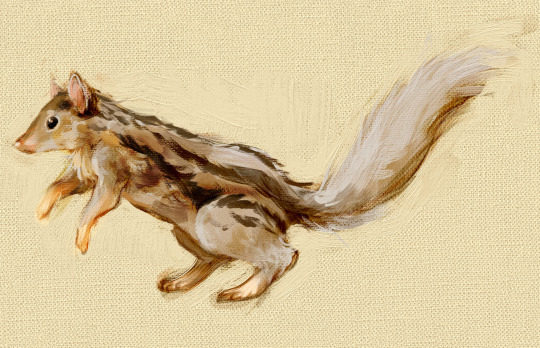
Grandidier's Mongoose.
Mongooses...mongeese? I think they are cute. It's the voraciousness that makes me fear them.
57 notes
·
View notes
Note
👊🥚👊
(Knuckle tats that read "THE EGG"

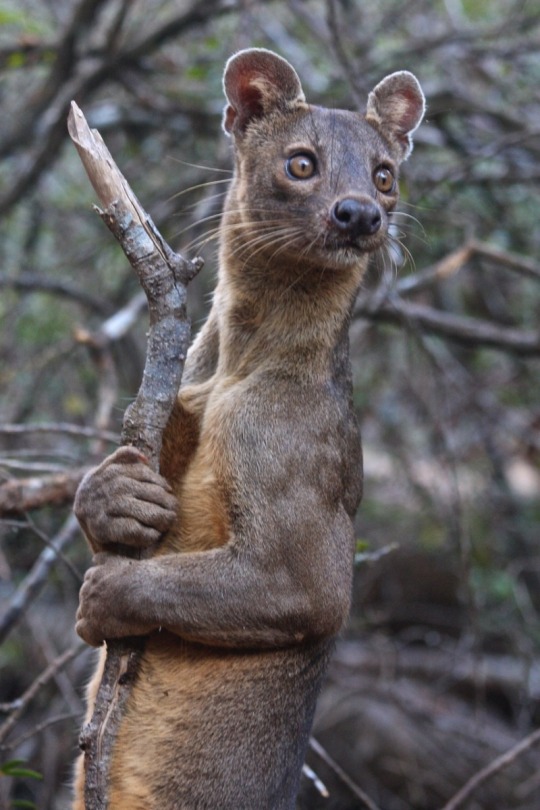
fossa!
(Cryptoprocta ferox)
99 notes
·
View notes
Text
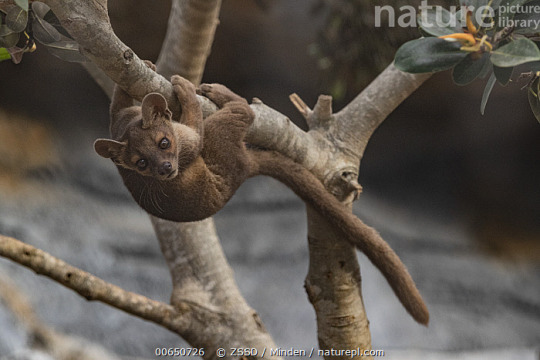
Fossa (Cryptoprocta ferox) pup hanging from branch
© ZSSD / Minden / naturepl.com
138 notes
·
View notes
Text

6 notes
·
View notes
Text






Ring-tailed vontsira (Galidia elegans), family Eupleridae
Although sometimes known as the ring-tailed mongoose, they are Malagasy carnivorans, a family closely related to true mongooses. The ring-tailed vontsira is the only species within its genus.
Dierenpark Zie-ZOO, taken January 2025
#animals#zoo#zoo photography#nature#ring-tailed vontsira#Galidia elegans#eupleridae#Malagasy carnivorans#euplerids#dierenpark zie-zoo#the (breeding) male is missing a front paw. there was a sign up but Iiii don't remember exactly what was on it. my bad.#either way he can still get around fine. very zippy animal.#fascinatingly their page on the zoo's website claims they're nocturnal. and wikipedia says they're diurnal.#either way they are always very active when visiting. in the semi-dark attic space.
1 note
·
View note
Text

Ring-tailed Vontsira (Galidia elegans) - (c) SaritaWolf - please do not repost
0 notes
Text
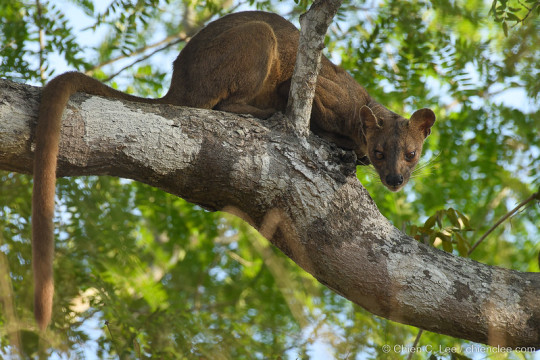
A female fossa (Cryptoprocta ferox) waits for a suitor male in a tree in Kirindy Reserve, Madagascar
by Chien Lee
#fossa#euplerids#cryptoprocta ferox#cryptoprocta#eupleridae#carnivora#mammalia#chordata#wildlife: madagascar#wildlife: africa
238 notes
·
View notes
Text



Ring-tailed Vontsira | Mariah Donohue
54 notes
·
View notes
Note
I dunno if anyone’s asked yet, but my fav of all time which is critically underrated is the Fanaloka ( Malagasy Civet) I did a report on them back in grade school when there was only like 6 pictures of them online. Would love to see if other ppl know em now :)
No one's asked for these yet! I absolutely know how that feels, it's great to see how far things come over the years though :)


These are also known as the Malagasy or striped civet, as well as the jabady.
#vulnerable species#madagascar#mammalia#mammal#mammals#carnivora#feliforma#eupleridae#malagasy civet#fanaloka#animal polls#poll blog#my polls#animals#polls#tumblr polls
53 notes
·
View notes
Text
Round 3 - Mammalia - Carnivora
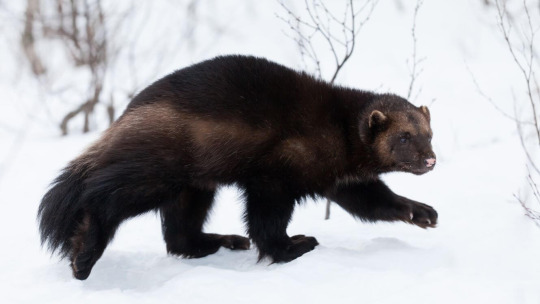
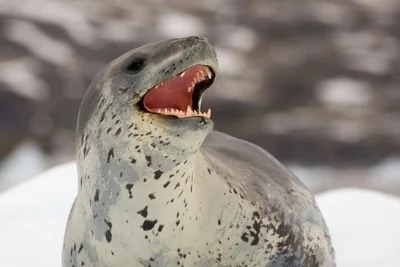
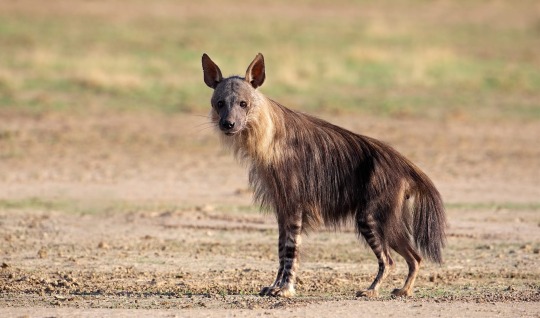

(Sources - 1, 2, 3, 4)
Our next order of mammals is Carnivora, mammals specialized primarily in eating meat. A diverse order, Carnivora contains the living families Canidae (“dogs”), Ursidae (“bears”), Phocidae (“earless seals”), Otariidae (“eared seals”), Odobenidae (“Walrus”), Mephitidae (“skunks” and “stink badgers”), Ailuridae (“Red Panda”), Procyonidae (“raccoons”, “coatis”, “ringtails”, “kinkajous”, and kin), Mustelidae (“weasels”, “badgers”, “otters”, “Wolverine”, and kin), Nandiniidae (“African Palm Civet”), Viverridae (“civets”, “genets”, “Binturong”, and kin), Herpestidae (“mongooses”), Eupleridae (“Malagasy mongooses”), Hyaenidae (“hyenas”), Prionodontidae (“Asiatic linsangs”), and Felidae (“cats”).
As the sixth largest order of mammals, Carnivora is very diverse and exhibits a wide array of body plans, varying greatly in size and shape. They usually have large, conical, thick, stress-resistant canine teeth. Most species have eyes on the front of their face, pointing forward. They often have a very well-developed sense of smell. Some carnivorans have retractile or semi-retractile claws. Carnivora is separated into two suborders, Caniformia and Feliformia, with Caniforms containing canids and their relatives and Feliforms containing felids and their relatives. (Yes, even in taxonomy, there is a dichotomy between cats and dogs.) Caniforms have longer jaws and more teeth, with less specialized carnassial teeth. They also tend more towards omnivory and opportunistic feeding, while the feliforms, other than the viverrids, are more specialized for eating meat. Some carnivorans have secondarily evolved mainly herbivorous diets. They exist in almost every habitat, from the polar North to hyper-arid deserts to marine seas.
Male carnivorans are usually larger than females. Some species are social while others are solitary. Some species only meet to mate, some form family groups organized around a breeding pair, and some involve a single male or males leading a harem of females and their young. Carnivores usually invest a lot into their young, teaching and raising them to adulthood.
Carnivoramorpha as a whole first appeared in the Paleocene of North America about 60 million years ago, as small marten-like or civet-like predators of insects, lizards, and other small vertebrates. Feliforms and Caniforms split around the Middle Eocene, about 42 million years ago. The precursors to the living feliforms remained forest-dwelling, arboreal or semi-arboreal ambush hunters, while the caniform precursors were more mobile, opportunistic hunters.

Propaganda under the cut:
Canids tend to live as monogamous pairs. Wolves (Canis lupus), Coyotes (Canis latrans), African Wild Dogs (Lycaon pictus), and Dholes (Cuon alpinus) live in groups that include a breeding pair and their offspring. Wolves may even live in extended family groups. Living in family groups allows these animals to work together to take down prey larger than themselves.
The Domestic Dog (Canis familiaris) was the first species to be domesticated by humans, from the Wolf (Canis lupus), more than 30,000 ago when humans were still hunter-gatherers. Domestic Dogs have evolved alongside humans, adapting to better understand and communicate with us, read human body language and expressions, and smell human emotions. Both dogs and humans release oxytocin while spending quality time together, a sign of a strong social bond. Over 340 breeds of Domestic Dog have been selectively bred for tasks such as hunting, herding, pulling loads, detecting a variety of scents, protection, and companionship, with various breeds also filling roles in therapy, aiding disabled people, and assisting police and the military.
According to the Creation Myths of the Serer People, jackals were the first animals on Earth, and the first intelligent beings before humans, and will be the last. In some stories, the jackal is sent to Earth by Roog as a messenger, and in others as a fallen prophet for disobeying the laws of the divine. The movements of the jackal are carefully observed, because the animal is viewed as a seer who came from the transcendence and maintains links with it. Although believed to be rejected by the other animals and deprived of its original intelligence, it is still respected because it dared to resist the supreme being who still keeps it alive.
The Polar Bear (Ursus maritimus) is the largest land carnivore, with adult males weighing 300–800 kg (660–1,760 lb) and being 200–250 cm (6.6–8.2 ft) long. Females are smaller at 180–200 cm (5.9–6.6 ft) with a weight of 150–300 kg (330–660 lb). Adults may stand 130–160 cm (4.3–5.2 ft) tall at the shoulder. The largest Polar Bear on record, reportedly weighing 1,002 kg (2,209 lb), was a male shot at Kotzebue Sound in northwestern Alaska in 1960.
The word “panda” derives from the Nepali word “ponya”, which means “ball of the foot” and “claws”. The Nepali word for the endangered Red Panda (Ailurus fulgens) is "nigalya ponya", which has been translated as "bamboo-footed", due to the animal’s adapted wrist bone which allows it to grip bamboo. When the Red Panda was first described in 1825, it was named an English shortening of this name: “panda.” For more than 40 years the Red Panda was known as simply the panda: the one and only panda. However, when the vulnerable Giant Panda (Ailuropoda melanoleuca) was described in 1869, it was also given the name panda. Historically, there was much debate over the taxonomic positions of these two species, as they were both carnivorans that had adapted to a very specific diet of mostly bamboo. However, we know today that the Giant Panda is indeed a bear and not closely related to the Red Panda, which is the only living member of its own family.
The endangered Giant Otter (Pteronura brasiliensis) is a semi-aquatic predator of north-central South America, and is capable of bringing down animals as tough as a small caiman. Giant Otters live in extended family groups, and are highly social with each other, but extremely territorial of other groups. Battles between groups sometimes break out at the boundaries between territories.
Weasels (genus Mustela) have a behavior called the “weasel war dance”, which consists of a frenzied series of hops sideways and backwards, often accompanied by an arched back and a frizzed-out tail. The weasel war dance happens when the animal is excited or happy, and often occurs after they have caught or killed their prey, or are playing.
Ferrets (Mustela furo) were domesticated from the European Polecat (Mustela putorius) around 2,500 years ago. The Romans used ferrets to hunt rabbits, rodents, and moles, as they are specifically adapted to squeeze into holes after prey. Genghis Khan, ruler of the Mongol Empire, is recorded as using an army of ferrets in a gigantic hunt in 1221 that aimed to purge an entire region of wild animals.
The smallest carnivoran is the Least Weasel (Mustela nivalis). Average body length (not counting the tail) in males is 130 to 260 mm (5 to 10.2 in), while females average 114 to 204 mm (4.5 to 8 in). Males weigh 36 to 250 g (1.3 to 8.8 oz), while females weigh 29 to 117 g (1 to 4.1 oz). Despite their diminutive size, Least Weasels are still effective predators, and can take on prey up to the size of a rabbit.
The North American Black-footed Ferret (Mustela nigripes) declined throughout the 20th century, primarily as a result of declines of its main prey, Prairie Dogs (genus Cynomys). In 1979, it was declared extinct. However, a small wild population was discovered in Meeteetse, Wyoming in 1981! A captive breeding program was launched, using these ferrets, and a reintroduction campaign was put into play. Today, over 200 mature individuals are in the wild across 18 populations, with four self-sustaining populations in South Dakota, Arizona, and Wyoming. In 2008, the Black-footed Ferret’s IUCN status was changed from “extinct in the wild” to “endangered”. In February 2021, the first successful clone of a Black-footed Ferret, a female named Elizabeth Ann, was introduced to the public. She was cloned using frozen cells from Willa, a female Black-footed Ferret who died in the 1980s and had no living descendants. This exciting development opened the doors to a new option for introducing much-needed genetic diversity into the captive breeding population. Elizabeth Ann could not breed herself, due to a condition unrelated to the cloning process, but in 2024, two new Black-Footed Ferret clones, Noreen and Antonia, were also cloned from Willa’s frozen cells. Antonia has since birthed a male and female kit, and Noreen is waiting for a suitable match.
The Honey Badger (Mellivora capensis) is famous for its strength, ferocity, and toughness. It is known for being able to fearlessly fight back when cornered, sometimes even dissuading Lions (Panthera leo) and Spotted Hyenas (Crocuta crocuta) from attacking it. It often raids beehives in search of honey and larvae, and is unbothered by bee stings, which have trouble penetrating its thick skin. They have been observed to kill and eat Black Mambas (Dendroaspis polylepis). They are also highly intelligent, and have been observed manipulating tools and performing complex problem-solving. Despite all this, they are only dangerous to humans if provoked, and most of their reputation comes from their willingness to defend themselves.
There are three species of raccoon, and the small, critically endangered Cozumel Raccoon (Procyon pygmaeus) is the rarest of them. It is native only to Cozumel Island off the coast of the Yucatan Peninsula, Mexico. It is estimated there are only around 192 mature individuals left in the world.
Walruses (Odobenus rosmarus) have powerful, mobile lips that they can use to generate high-powered suction. They do this to feed on one of their favorite prey items: clams. A Walrus can suck the meat out of a clam by sealing its powerful lips to the animal’s shell and withdrawing its piston-like tongue rapidly into its mouth, creating a vacuum. They can also use their mobile lips to whistle in the same way humans do!
The Baikal Seal (Pusa sibirica) is the only species of exclusively freshwater seal. They are native only to Lake Baikal in Siberia, Russia. The most recognizable characteristic of the Baikal Seal is its large, dark eyes. Lake Baikal is the deepest lake in the world, and has varying levels of light intensity. The seal’s large eyes allow it to take in as much light as possible in this environment.
The African Palm Civet (Nandinia binotata) is the most genetically isolated Carnivoran, being the only species within its whole superfamily.
The Jaguar (Panthera onca) employs an unusual killing method: it bites directly through the skull of mammalian prey, between the ears, to deliver a fatal blow to the brain. It does this with a powerful bite force of 1,500 PSI. This bite also allows it to pierce the shells of turtles and the osteoderms of caimans.
When Cecil the male African Lion (Panthera leo leo) was killed in July 2015 by Walter Palmer, an American recreational big-game trophy hunter, there was international uproar and a change in the atmosphere regarding trophy hunting. There was also worry amongst the scientists who had been studying Cecil’s pride that his cubs were now in danger. When one or more new male Lions replace a previous male(s) associated with a pride, they often kill any existing young cubs, to ensure that only their bloodline is produced going forward. However, Cecil had formed a partnership with another male lion named Jericho. When Cecil was killed, Jericho took over the pride but did not kill Cecil’s cubs, and also protected them from any rivals.
The Domestic Cat (Felis catus) was domesticated from the African Wildcat (Felis lybica) about 10,000 years ago. Ancient Egyptians revered the Domestic Cat, and families would take their dead cats to the sacred city of Bubastis, where they were embalmed and buried in sacred repositories. Cats eventually replaced Ferrets as the pest-controlling housepet of choice in Ancient Greece and Rome, as they were considered more pleasant to keep around the house. Like dogs, they have adapted to live alongside us, evolving new vocalizations, body language, and behaviors specifically for communicating with humans, and generally becoming a social species (the African Wildcat is typically solitary and territorial). Today, there are over 41 breeds of Domestic Cat, and they are kept mainly for companionship and pest control. Unfortunately, they have also become one of the most abandoned pets.
The Cheetah (Acinonyx jubatus) is regarded as the fastest-running land animal. It is capable of running at 93 to 104 km/h (58 to 65 mph) in a sprint.
The Asian Palm Civet (Paradoxurus hermaphroditus) is threatened by poaching and the illegal wildlife trade in Indonesia. They are captured for use in the production of kopi luwak. Kopi luwak, also known as civet coffee, is a coffee that consists of partially digested coffee cherries, which have been eaten and defecated by the Asian Palm Civet. The cherries are fermented as they pass through a civet's intestines, and after being defecated with other fecal matter, they are collected. What was once a traditional drink, made from coffee cherries collected from civet feces in the wild, has become increasingly commercialized due to international demand and curiosity. Now, to meet demand, Asian Palm Civets are captured, kept in battery cages, and forcefed nothing but coffee cherries. The civets in kopi luwak farms are kept in abysmal conditions which include isolation, poor diet, small cages, and a high mortality rate. Kopi luwak is one of the most expensive coffees in the world, with retail prices reaching US$100 per kilogram (2.2 lbs) for farmed beans and US$1,300 per kilogram for wild-collected beans.
In some countries, the African Civet (Civettictis civetta) (image 4) is threatened by capture for the perfume industry, as its pheromone civetone is often used as a natural musk. The Calvin Klein-brand male cologne Obsession utilizes synthetic civetone, making the cologne highly attractive to feliforms. Obsession is sometimes used in the field to attract wild cats to camera traps, and is also used in zoos and sanctuaries as scent enrichment.
Mongooses (family Herpestidae) are one of at least four known mammalian taxa with mutations in the nicotinic acetylcholine receptor that protect against snake venom. This makes them fierce and effective predators of venomous snakes.
The Spotted Hyena (Crocuta crocuta) lives in large clans which can consist of up to 80 individuals. These clans are typically led by females, though they can occasionally co-dominate with a male. Clans are run by a matriarch, and her youngest female cub will become the new matriarch when she passes. When a male co-dominates with a female or is otherwise able to lead, this is because the male was born to the matriarch of the clan and has taken the rank directly below his mother.
The Aardwolf (Proteles cristatus) is a small, basal hyena that mainly eats termites. Like other animals adapted for eating termites, it has a long, sticky tongue.
Carnivorans usually occupy a very important part of the ecosystem, and most apex predators are carnivorans. Apex predators can be considered ecosystem engineers, due to the huge impact they have on their environment. One of the most famous examples of this was the reintroduction of Wolves (Canis lupus) in Yellowstone National Park. In 1884, the state of Montana instituted a bounty on Wolves: one dollar per Wolf killed. Wolves were considered a “menace” to Yellowstone’s wildlife, and more concerted efforts mounted to exterminate them. The Elk (Cervus canadensis) population began to explode, and they grazed their way across the landscape, killing young brush and trees. As early as the 1930s, scientists were alarmed by the degradation and were worried about erosion and plants dying off. By the 1970s, there were no resident populations of Wolves in Yellowstone, and Wolves had been almost completely eradicated in the lower 48 states. In 1974, the Wolf was listed in the endangered species act.
Starting in January 1995, Wolves from Canada began to be relocated to Yellowstone National Park. In the years that followed, wolves brought the Elk population down and their presence protected the open valleys from overgrazing, as the fear of predators kept the herds on the move. Willows (genus Salix) began to grow larger, with an increase in size of 1,500% by 2020. With the foliage returning to the park, Beavers (Castor canadensis), Lynxes (Felis lynx canadensis), Wolverines (Gulo gulo) (image 1), and many other formerly reduced species began to rebound. Beaver colonies have grown from 1 in 1995 to 19 by 2015 with four active dams in use. The dams build wetland ecosystems, used by millions of other species. This is an enduring example of a Trophic Cascade: a powerful indirect interaction that can control entire ecosystems, occurring when a trophic level in a food web is removed or added.
Even though domestic carnivorans like the Domestic Dog, Domestic Cat, and to a lesser extent, the Ferret, are some of the most popular pets in the world, most wild carnivorans have been, and still are, unfairly demonized. Many species have been overhunted, resulting in extirpation in some areas. Even early “conservationists” did not understand the value of predators, considering it a boon to the ecosystem to wipe them out entirely. Bounties are still placed on carnivorans today, and many ranchers and farmers push to have them completely wiped out to protect their livestock. If you cross the border of Yellowstone into a nearby town, you must be ready to hear all about how Wolves are evil creatures who kill for pleasure, and are going to kill all the precious Elk. It is a constant uphill battle to reintroduce carnivorans who may have been extirpated from their historical ranges. Yet in some places, humans have learned to coexist with these important parts of the ecosystem. One of the best ways to support carnivorans is through ecotourism. Locals tend to see more value in the predators they have to share space with when visitors are both excited about and bringing in tourism revenue because of these animals.
#animal polls#round 3#mammalia#I didn’t mean to post this early for some reason the schedule turned into a post now button when I went to edit it#but here we are#my buffer has finally caught up to me and here I am writing about carnivorans at 3am when I have to get up in 3 hours and drive for 12#rip me#sorry there’s not more fun animals facts
153 notes
·
View notes
Text

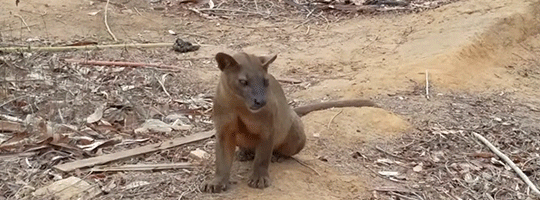
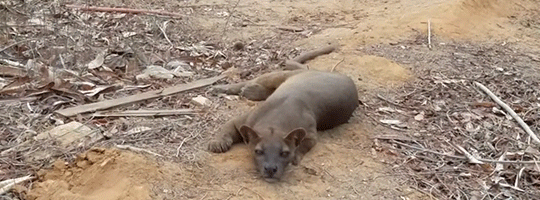

One of many species endemic to Madagascar is the fossa. It resembles many animals, but taxonomically it's part of a unique group of carnivores called Eupleridae which is thought to have evolved from a single species that arrived on the island from Africa as long as 18 million years ago. ©
1K notes
·
View notes
Note
🥚
Can i... receive and animal o great druid
You can
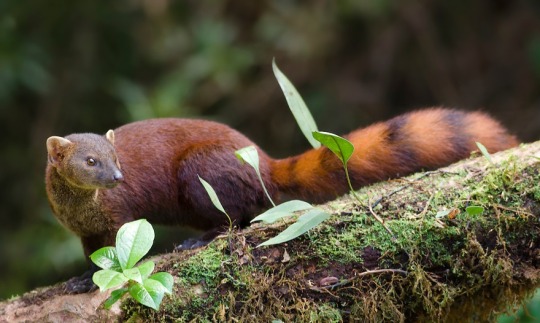
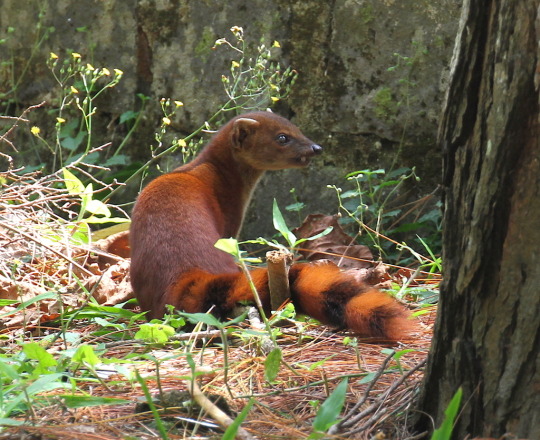
ring-tailed vontsira/mongoose!
(Galidia elegans)
77 notes
·
View notes